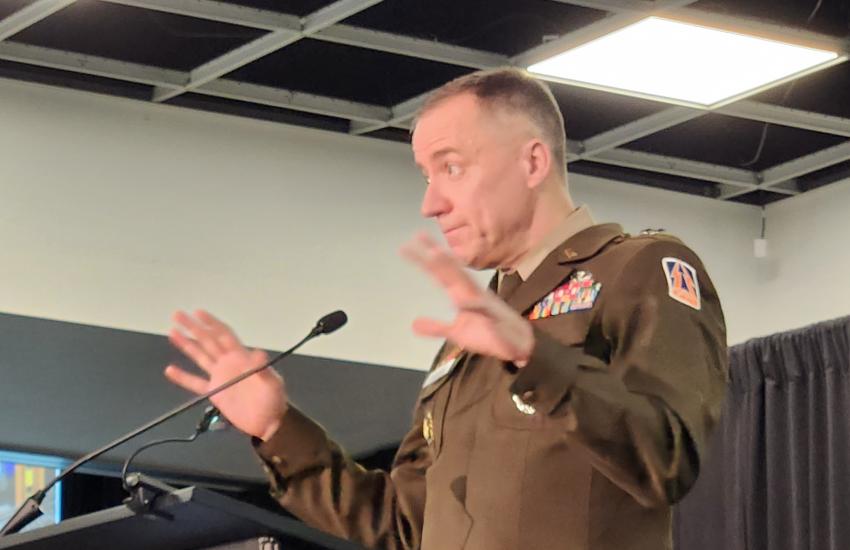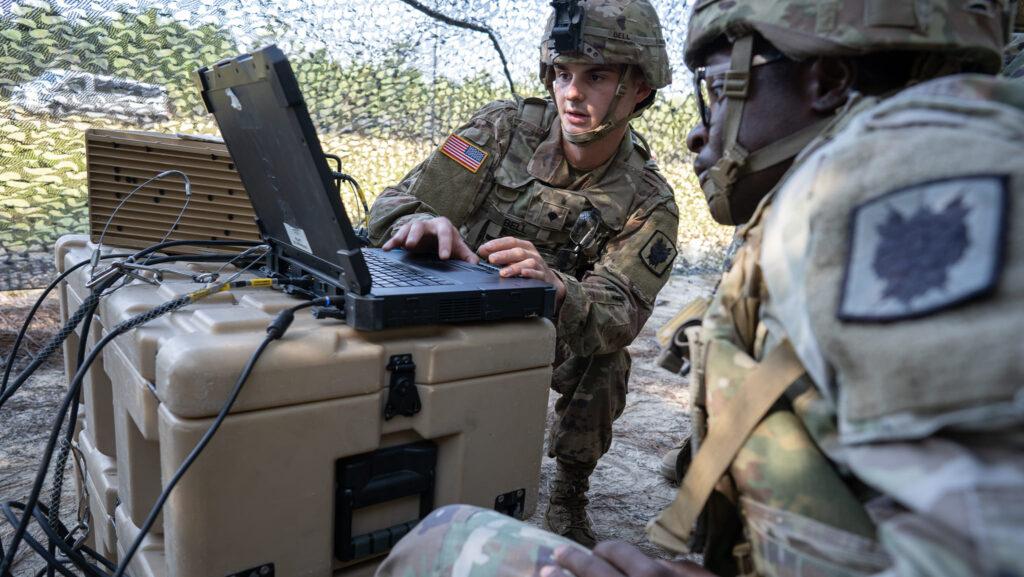How To Improve U.S. Ability To Rapidly Deploy Communications Infrastructure
Improving the ability to rapidly deploy troops with the necessary infrastructure is a national security need, according to Maj. Gen. Jan Norris, commander, 335 Signal Command (Theater).
Norris suggested improving the ability to rapidly surge troops along with the necessary communications infrastructure while addressing the audience February 26 at the AFCEA Atlanta Chapter’s Homeland Security Conference in Atlanta. His Army Reserve command, he noted, includes about 4,000 signal and cyber soldiers across the continental United States and deployed forward in Europe and Southwest Asia.
A robust communications infrastructure, he pointed out, is important not only for national security but also for economic growth and society at large.
“It goes without saying that the ability of our nation to quickly establish robust communication networks is not just a technical advantage, but a necessity for economic growth, our societal well-being, and more importantly, it's critically important for our national security—particularly if deterrence fails and we ever find ourselves in a future large-scale, enduring conflict in the east or west. Our communications infrastructure is the backbone of our digital economy, enabling everything from basic phone calls to complex data transfers that power our businesses, governments and personal lives,” Norris said.
However, that rapid deployment of communications infrastructure could use some improvements, he suggested. Norris indicated the U.S. Army and U.S. Department of Defense mobilization forces generating installations are not prepared to “receive potentially tens of thousands of soldiers and service members preparing to deploy somewhere around the globe with the communications infrastructure required to support such a large surge or a protracted length of time.”
He noted that homeland crisis also could require a need for rapid mobilization and reported that he had just visited the 10th Mountain Division and the Army Network Enterprise Technology Command at Fort Huachuca to help establish a command center to support southern border task force. “I expect our teammates, as we gather here this afternoon, our teammates in Northern Command are thinking hard about the ability to surge infrastructure on our southern border.”
Typically, the Army initially will “surge the tactical” until it can come up with an enduring, fixed solution or build out the infrastructure for enduring operations,” Norris explained. “So, I'll be very interested to see what, what develops with Northern Command as they build out for—at least with this administration—for an enduring period of time to provide communication to them."
He recommended four focus areas to help improve the situation: regulatory frameworks, collaboration between public and private sectors, talent and resilience, and redundancy.
Regarding the first, he said governments and regulatory bodies “must create conducive environments for quicker deployment of communications infrastructure” to include “streamlining the approval processes for permits and providing incentives for private sector investments.” He added that “policies should be designed to encourage competition and innovation, while also ensuring that the benefits of advanced technologies reach all segments of society."
He cited simplifying and expediting the permitting process for installation of infrastructure capabilities such as cell towers and fiber optic cables to reduce deployment times as one example. He suggested using a so-called “shot clock,” a deadline for approving or disapproving permit applications. “Some local authorities have done this in certain cities and states, and that's met with some success, where you set up a maximum time limit for the permit to be approved or denied, not waiting like eight to 12 months, instead a shot clock in 90 days to get the permit.”
On collaboration, Norris said the different sectors can combine their strengths—efficiency and innovation of the private sector and the strategic oversight and resources of the public sector. “Such partnerships can help bridge the digital divide, ensuring that even the most remote and underserved areas or regions across the nation have access to modern communication networks.”
He illustrated the point by recalling his time as a garrison commander in California when he received a call from the secretary of the Army because the sexual assault coordinator at the base had missed three audit phone calls, and the secretary wanted to know why. It turned out a lack of infrastructure at the remote garrison was the problem, so Norris reached out to the communications companies in the area, and Verizon responded quickly.
“Within weeks, they came back with a proposal of what they could do for us. And it was amazing what they wanted to do out there. They understood our training population. We had about 1,000 employees on any given day that reduced down to about 200 at night, and then on any given month in a peak training period, we might have 68,000 soldiers and controllers out in training area,” he said.

Verizon, though, offered the capacity for 6,000 mobile devices at five megs per device and the ability to transmit in every direction, including in areas where communications weren’t usually needed. “It wasn't rapid at all. Verizon was ready. The government was not ready. The Army was not ready,” Norris said.
He recalled having to get approval from the Defense Information Systems Agency and others, which took about 16 months. Once he gave Verizon the green light, the company installed the necessary equipment in two months. So, it took 16 months for approvals, two for installation.
“We need to think through ways, and maybe we will, in time of need for large-scale conflict, we may be able to reduce that bureaucracy down to shorter time periods. I certainly wish, looking back, I had some type of shot clock with the government that would have expired, so I could have gotten that capability installed much earlier,” Norris shared.
Moving on to workforce issues, he declared a skilled workforce to be “the foundation of any successful infrastructure deployment and sustainment of that infrastructure” and stressed the need to invest in education and training programs to “equip our workforce with the necessary skills to design, build and maintain advanced communication networks” to include not only technical skills, but “knowledge of cybersecurity practices to protect these critical infrastructures from threats … now and in the future for the Army.”
And the deployed infrastructure must be resilient and redundant. “As we quickly deploy new communications infrastructure, we must also ensure that these networks are resilient and capable of withstanding various challenges and threats. That’s everything: natural disasters, cyber attacks, other disruptions. Building redundancy into our networks and adopting a zero-trust architecture can enhance the security and reliability of our infrastructure. Particularly for the Army moving into this unified network based on zero-trust principles, a lot of work to streamline and flatten our cyber attack surface.”
The second piece of resilience is the concept of sharing infrastructure, including towers, ducts, conduits, recruitment, employment, when and where needed, and then “working to ensure what shared, wherever that shared infrastructure is needed, is secure,” and not just physically secured but “physically and financially only controlled by the U.S.” and not by a potential adversary.





Comments